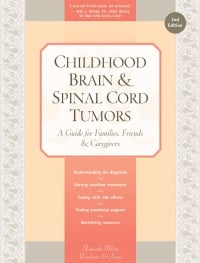Childhood Brain and Spinal Cord Tumors
Chapter 7: Forming a Partnership with the Treatment Team
It is our duty as physicians to estimate probabilities and to discipline expectations; but leading away from probabilities there are paths of possibilities, toward which it is our duty to hold aloft the light, and the name of that light is hope.
— Karl Menninger
The Vital Balance
IT IS VITALLY IMPORTANT that parents and the treatment team establish and maintain a relationship based on excellent medical care, good communication, and caring. In this partnership, trust is paramount. Doctors rely on parents to make and keep appointments, give the proper medicines at the appropriate times, prepare the child for procedures, and monitor the child for signs of illness or side effects. Parents rely on doctors for medical knowledge, expertise in performing procedures, good judgment, compassion, and clear communication. It is a delicate dance that spans years of trauma and emotional upheaval.
Unlike many other diseases, children with brain and spinal cord tumors spend months or years being treated on an inpatient and outpatient basis. In addition, the treatment of brain and spinal cord tumors in children requires a multidisciplinary approach involving many teams of medical, surgical, and rehabilitative specialists. At various points during the diagnosis and treatment journey, the primary responsibility of providing treatment for the child with a brain or spinal cord tumor shifts from one group of doctors to another.
At diagnosis and in the initial stages of treatment, the pediatric neurosurgeon is usually the captain of the multidisciplinary team. This leadership shifts after surgery to the neuro-oncologist, oncologist, neurologist, radiation oncologist, or physical therapy specialist to coordinate the next phase of treatment. Once treatment is finished, the neuro-oncologist or expert in late effects of treatment may assume leadership of the necessary long-term follow-up. It is the parents, however, who bear the responsibility for coordinating the care and communication between members of the multidisciplinary team.
A climate of cooperation and respect between the healthcare team and parents allows children to thrive. This chapter explores ways to create and maintain that environment.
Table of Contents
All Guides- Introduction
- 1. Diagnosis
- 2. The Brain and Spinal Cord
- 3. Types of Tumors
- 4. Telling Your Child and Others
- 5. Choosing a Treatment
- 6. Coping with Procedures
- 7. Forming a Partnership with the Treatment Team
- 8. Hospitalization
- 9. Venous Catheters
- 10. Surgery
- 11. Chemotherapy
- 12. Common Side Effects of Chemotherapy
- 13. Radiation Therapy
- 14. Peripheral Blood Stem Cell Transplantation
- 15. Siblings
- 16. Family and Friends
- 17. Communication and Behavior
- 18. School
- 19. Sources of Support
- 20. Nutrition
- 21. Medical and Financial Record-keeping
- 22. End of Treatment and Beyond
- 23. Recurrence
- 24. Death and Bereavement
- 25. Looking Forward
- Appendix A. Blood Tests and What They Mean
- Appendix C. Books and Websites

